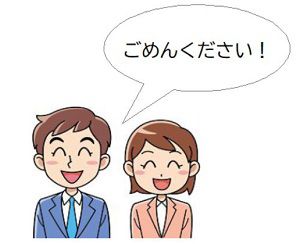Blogs edited and submitted by Chiho Kamioka
JOI Support staff and manager.
Standard Japanese
- Font size: Larger Smaller
- Hits: 2336
- 0 Comments
- Subscribe to this entry
Japanese dialects
Japanese dialects are often separated into two categories of eastern and western. But in reality, there are many variations and even some types of spoken ways that are not strictly dialects at all but completely different forms of the Japanese language family.
It can be confusing to understand various people from different prefectures and Japanese people are often very interested in these differences. There are many shows on TV and topics in general media that focus on these prefectural differences.
In this blog for Japanese language users, Fujinawa sensei talks about this topic too. Her hometown prefecture of Niigata has some interesting dialects and also the prefecture of Yamanashi has another difference mentioned in this blog.
Read this blog to learn some new Japanese language phrases. You can listen to the blog by watching the video too.
標準語だと思っていたのに…
Standard Japanese...or so I thought

By FUJINAWA Miyako

日本の学生の多くは、18歳になるとこれまでの環境 と大きく変わります。高校までは、地元 の人と過ごしますが、それ以降は、進学や就職で他の都道府県の人との出会いが増えます。もし、住む場所が変わらなかったとしても、出身地の違う人たちと接することになるはずです。
私の場合も、他県出身の人たちと仲良くなっていく中で、地域差を感じました。その一つが今日のテーマ標準語です。
あいさつの中に「ごめんください」ということばがあります。他の家へ訪問するときに使います。実はこのことば、私が住んでいる新潟県では、訪問するときのあいさつのほかに、道で知っている人とすれ違うときのあいさつにも使われます。すれ違ったときに使う「ごめんください」は他の地域では使いません。この使い方は、方言だったのです。
似たような例に「①」があります。私もよくレッスンのスライドで使います。 みなさんは、これをどう読みますか? 「まるいち」と読む人が多いのではないでしょうか。 ところが、山形県の人はこれを「いちまる」と読むのだそうです。理由は①を手書きするときは数字の1を書いてから〇で囲むからだそうです。私の大学の先生によると、山形県だけが「いちまる」と読むそうです。
日本語は奥が深いな、と思います。
To listen to this blog, please watch our Youtube video.
標準語(ひょうじゅんご)だと思っていたのに…
日本の学生の多(おお)くは、18歳(さい)になるとこれまでの環境(かんきょう)と大きく変わります。高校までは、地元(じもと)の人と過(す)ごしますが、それ以降(いこう)は、進学(しんがく)や就職(しゅうしょく)で他(た)の都道府県(とどうふけん)の人との出会(であ)いが増(ふ)えます。もし、住(す)む場所(ばしょ)が変(か)わらなかったとしても、出身地(しゅっしんち)の違(ちが)う人たちと接(せっ)することになるはずです。
わたしの場合(ばあい)も、他県出身(たけんしゅっしん)の人たちと仲良(なかよ)くなっていく中(なか)で地域差(ちいきさ)を感(かん)じました。その一つが今日(きょう)のテーマ標準語(ひょうじゅんご)です。
あいさつの中に「ごめんください」ということばがあります。他(ほか)の家(いえ)へ訪問(ほうもん)するときに使います。実(じつ)はこのことば、わたしが住(す)んでいる新潟県(にいがた)では、訪問(ほうもん)するときのあいさつのほかに、道(みち)で知(し)っている人とすれ違うときのあいさつにも使われます。すれ違(ちが)ったときに使う「ごめんください」は他(ほか)の地域(ちいき)では使いません。この使い方は、方言だったのです。
似(に)たような例(れい)に「①」(まるいち)があります。私もよくレッスンのスライドで使います。 みなさんは、これをどう読(よ)みますか? 「まるいち」と読む人が多いのではないでしょうか。 ところが、山形県(やまがた)の人はこれを「いちまる」と読むのだそうです。理由(りゆう)は①を手書き(てがき)するときは数字(すうじ)の1を書いてから〇で囲(かこ)むからだそうです。私の大学時代の先生によると、山形県だけが「いちまる」と読むそうです。
日本語は奥(おく)が深(ふか)いな、と思います。
Standard Japanese...or so I thought
For most Japanese school students, their environments change vastly after they become 18 years old. Up until high school, they spend their time mainly with people from their hometowns but after that, as they move up to higher education and start to work, their chances to meet people from the other prefectures in Japan increase. And even if they don't move far from home, they should get some chances to meet other people not from their own birthplaces.
In my case too, when I became friendly with people from other prefectures, I came to realize the differences between the prefectures. One of those differences, standard Japanese, is what I would like to base today's language learning blog topic on.
Among usual greetings in Japanese, there is a phrase “Gomen kudasai”. You use it when visiting another person's house. To tell the truth, in my hometown of Niigata prefecture where I live, as well as a greeting when visiting people, we also use it when you pass someone you know on the streets. This way of using “Gomen kudasai” when you bump into an acquaintance on the road, isn't used in other prefectures. It is what is known as a local dialect.
There is another similar example, with the figure of 「①」. I often use this figure in my lesson slides too. How do you read this figure in Japanese? Most people call it 'Maru Ichi' (circled 1), right? However, people from Yamanashi prefecture read this as 'Ichi Maru' (1 circle). The reason is that when you write the figure, you usually write the one first and then circle it secondly. According to one of my teachers in my university days, who was from Yamanashi prefecture, this way of reading the figure is limited only to Yamanashi prefecture people.
The Japanese can be quite profound I think.
標準語(ひょうじゅんご):standard Japanese
環境(かんきょう):environment; surroundings
地元(じもと):one’s hometown
進学(しんがく):上の学校に行くこと。go on to the next stage of education
就職(しゅうしょく): to find work [a job]; to get a job
都道府県(とどうふけん):prefectures
出身地(しゅっしんち):one's birthplace
接する(せっする):meet people
~はず:must / be supposed to be the case (N4の文法のポイントです。)
地域差(ちいきさ):iron out regional differences.
訪問(ほうもん):visit
実(じつ)は:to tell you the truth, actually
方言(ほうげん):a dialect
手書き(てがき):handwritten
日本語は奥(おく)が深(ふか)い:Japanese is very profound
Hello My name is Miyako Fujinawa.
I live in Nagaoka city in Niigata prefecture, which is famous for having "the best fireworks in Japan".
Through the process of teaching Japanese, I can get to meet various people from different countries, and find out some cultural differences and I find this very interesting. And since I don't get to travel often, one of the things that I look forward to is listening to everyone's stories and find myself feeling as though I have taken a trip to various places. I look forward to meeting you.


